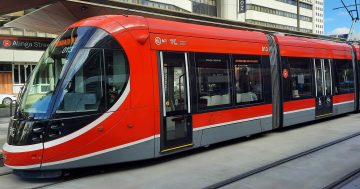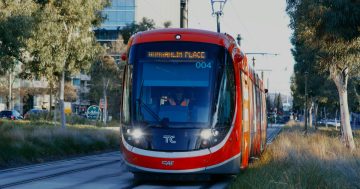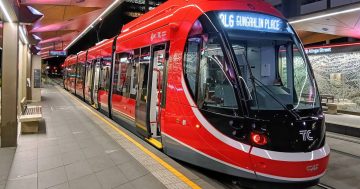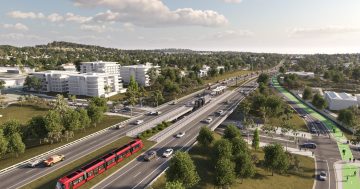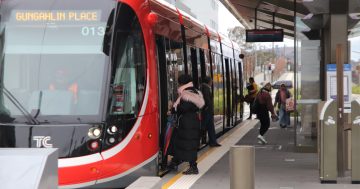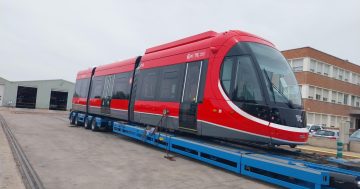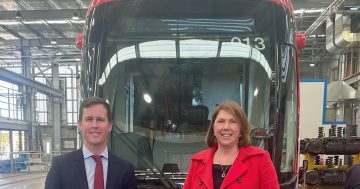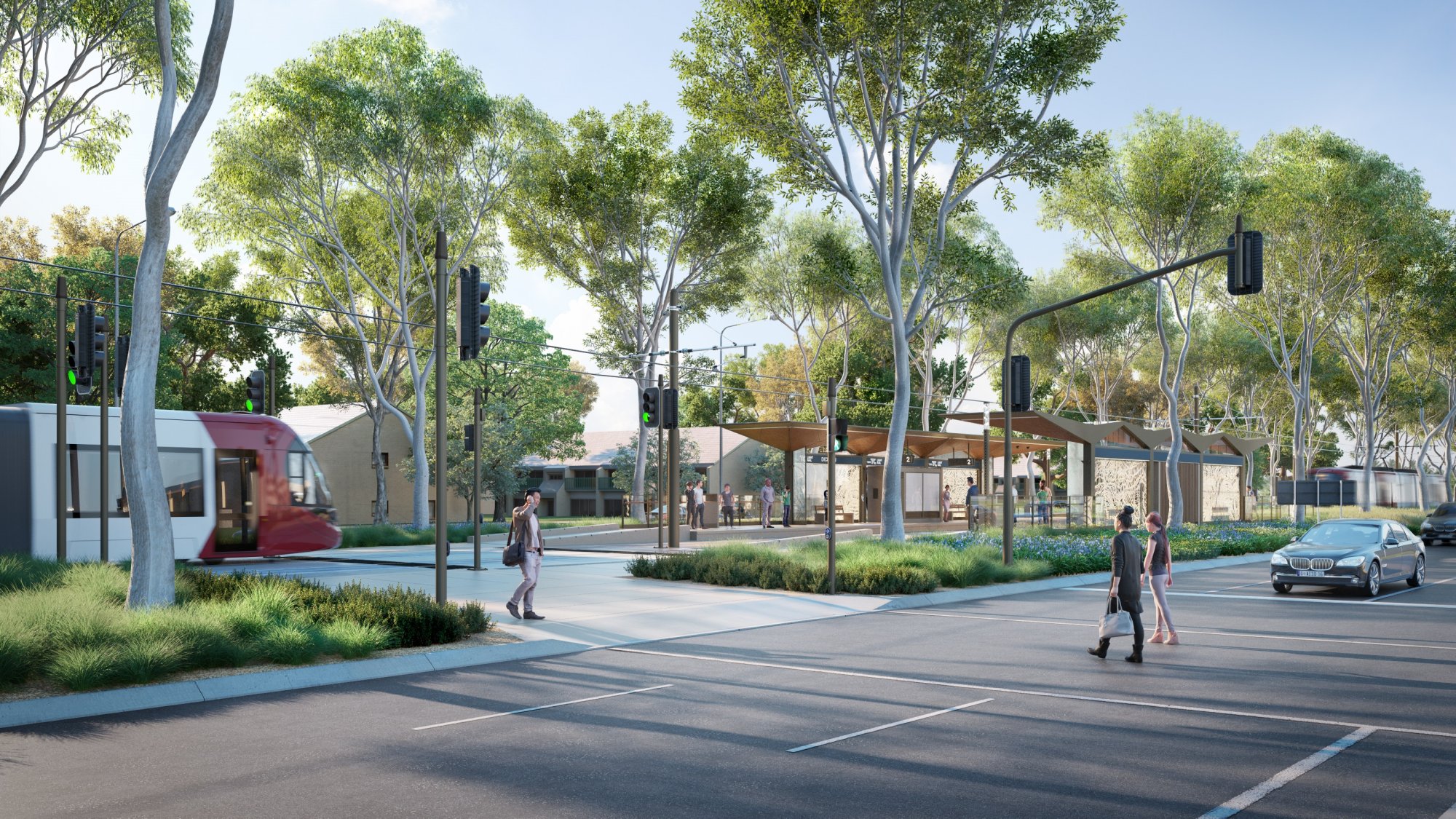
The ACT Government is planning for the future by building a mass-transit system in light rail that, over coming decades, will be complemented by cheap and ubiquitous electric and self- driving car technology.
Like many Canberrans, I’ve enthusiastically followed the development of self-driving vehicle technology. Coupled with reliable and cheaper electric vehicle (EV) technology, autonomous electric cars (AVs) have the potential to replace conventional vehicles in the future and we will all benefit.
I’m keen to see the ACT Government play an active role in promoting self-driving and electric vehicle policy and infrastructure in our city. I was pleased that ACT Chief Minister Andrew Barr announced an investment of $1.35 million in funding in the 2017 ACT Budget for a trial of self-driving technology in the ACT.
The ACT Government has already lowered duties for fuel-efficient cars and provided electric-car charging stations across the territory. We’re also continuing to lobby Waymo and Tesla to test more driverless car technologies in Canberra.
Seeing Machines, Waymo, Uber and Tesla are all in the race to develop driverless technology, and with Apple rumoured to be developing its own vehicle, it is clear self-driving cars are on their way. While some advanced driver assistance technologies are already here and they will become much more sophisticated over the next few years, fully driverless technology will take longer to develop. Nonetheless driverless cars are definitely a part of our future.
Electric cars are already here and are gradually becoming less expensive. The first deliveries of the lower priced (and aesthetically pleasing) Tesla Model 3 will take place in November this year, and will include inbuilt semi-autonomous driverless technology with the capacity for fully-autonomous upgrades. Bloomberg New Energy Finance analysis has predicted electric cars will become cheaper than conventional cars by 2022.
The combination of electric and autonomous technologies has the potential to provide significant environmental benefits, increased safety through reduced human error, and increase in leisure or work time for commuters while on route to their destinations.
Importantly though, we must recognise autonomous vehicles will not displace the role of mass transit systems like light rail. Cars are still cars, and they will still cause congestion, autonomous or not. A mix of transport solutions, with autonomous electric vehicles, active travel and a mass transit system like light rail, will all have a role to play in moving people around Canberra in the future.
Light rail is a proven mode of mass transit. It will move people around our city quickly and efficiently across our future city wide network outlined in the Light Rail Master Plan.
The role of mass transit transport will only increase in importance as our city grows. This week the Census has confirmed the ACT is the fastest growing jurisdiction in the country.Our city of 400,000 people is projected to increase over the next two decades from 400,000 to more than 500,000. On current growth estimates, Canberra will overtake Tasmania’s population by the early 2030s. This growth trajectory will mean thousands of extra cars on the road and – regardless of whether these cars have driverless technologies or not – this will lead to associated congestion. Unless we invest in mass transit, to move large numbers of people around quickly and efficiently, our city will suffer the same gridlocked fate as Sydney.
That’s why the future is very bright for mass transit systems like light rail. Sustainability and Resource Productivity company, McKinsey, has put forward ‘an integrated perspective on the future of mobility’ including autonomous vehicles that finds that:
Mass-transit rail systems – in combination with walking and cycling – would remain a vital and essential part of the mobility system, as the speed and capacity of such systems remains unrivalled.
Self-driving cars cannot solve the congestion problem alone. If not implemented properly, autonomous vehicles and taxis may in fact add to congestion pressures because of ‘dead trips’ when commuters ‘call’ empty cars to them from across the city. Ride-sharing isn’t an easy solution for this problem either.
There is no doubt autonomous vehicles have the potential to be more efficient than conventional cars in negotiating traffic conditions. Efficient braking and acceleration, and a fully integrated autonomous network where vehicles are ‘talking’ to each other can improve fuel efficiency and traffic flow.
However, mass transit systems will continue to play an important role in moving large numbers of people down major transport corridors, reducing congestion for other road users.
Self-driving taxis have potential to feed mass transit options like light rail, rapid bus routes and train lines rather than adding to traffic on a congested thoroughfares. Far from supplanting Capital Metro, a fleet of self-driving taxis will augment our public transport network by more conveniently directing patronage through light rail stops.
This supports the aim of Transport Canberra to create an integrated transport network for our growing city. The Government’s approach is proactive and will ease congestion, tackle transport-based pollution and direct economic activity into our city centres.
The International Association of Public Transport (UITP) has put together a neat diagram of the consequences of autonomous vehicles:

As the diagram suggests, an integrated light rail network will not only provide better quality of transport for people, but lead urban regeneration, while reducing congestion.
The narrow obsession of anti-light rail protagonists in promoting a single mode of transport – more privately owned cars on the road – will only lead to more traffic.
So while I welcome the emergence of self-driving vehicle technology, the ACT Government must also stand up to safeguard the liveability of our city by investing in a multi-modal transport future.
We will continue to invest in a city-wide light rail network and better active travel connections at the same time as supporting nascent autonomous vehicle technology – because all are part of the future of mobility in Canberra.












